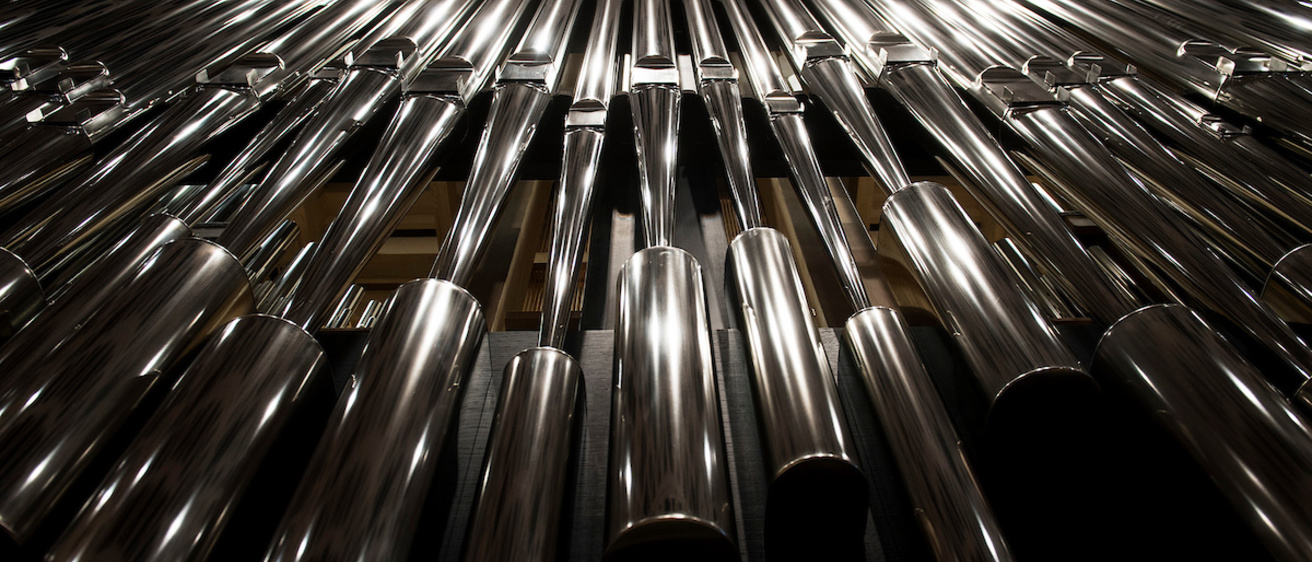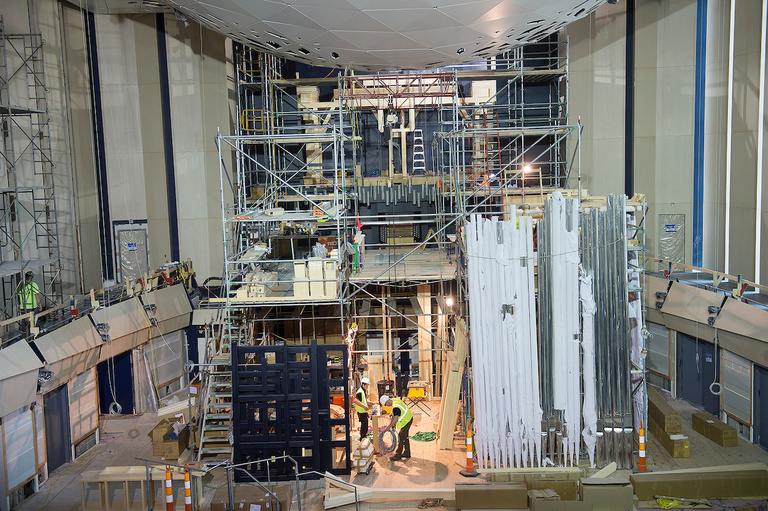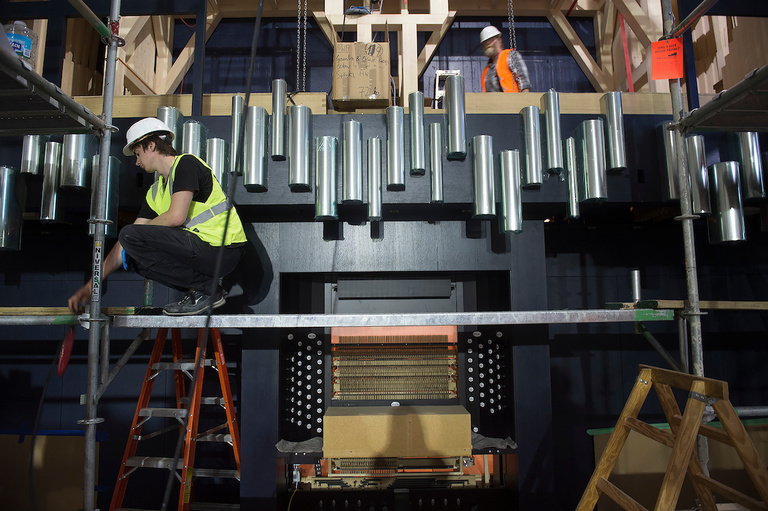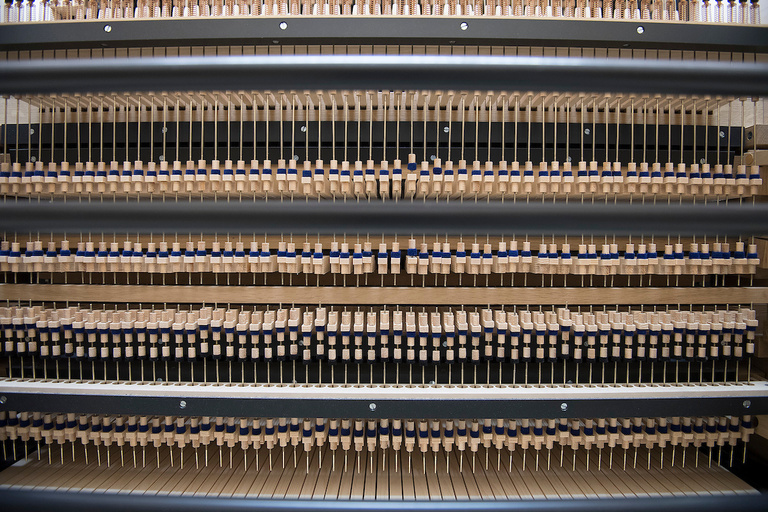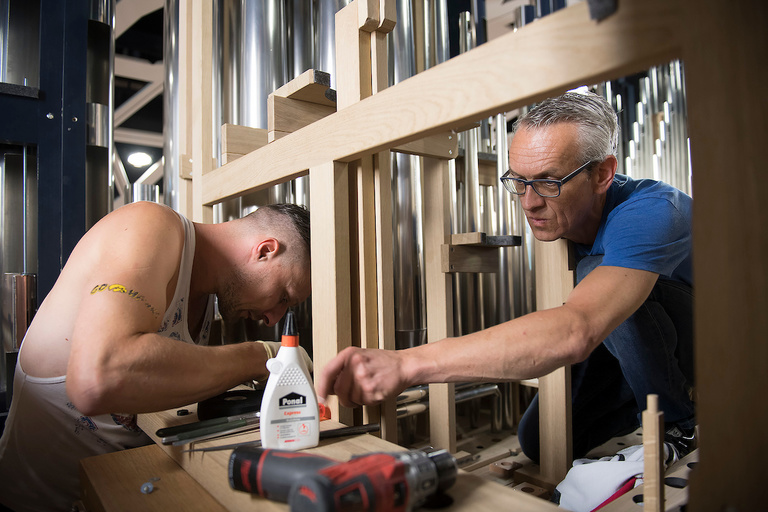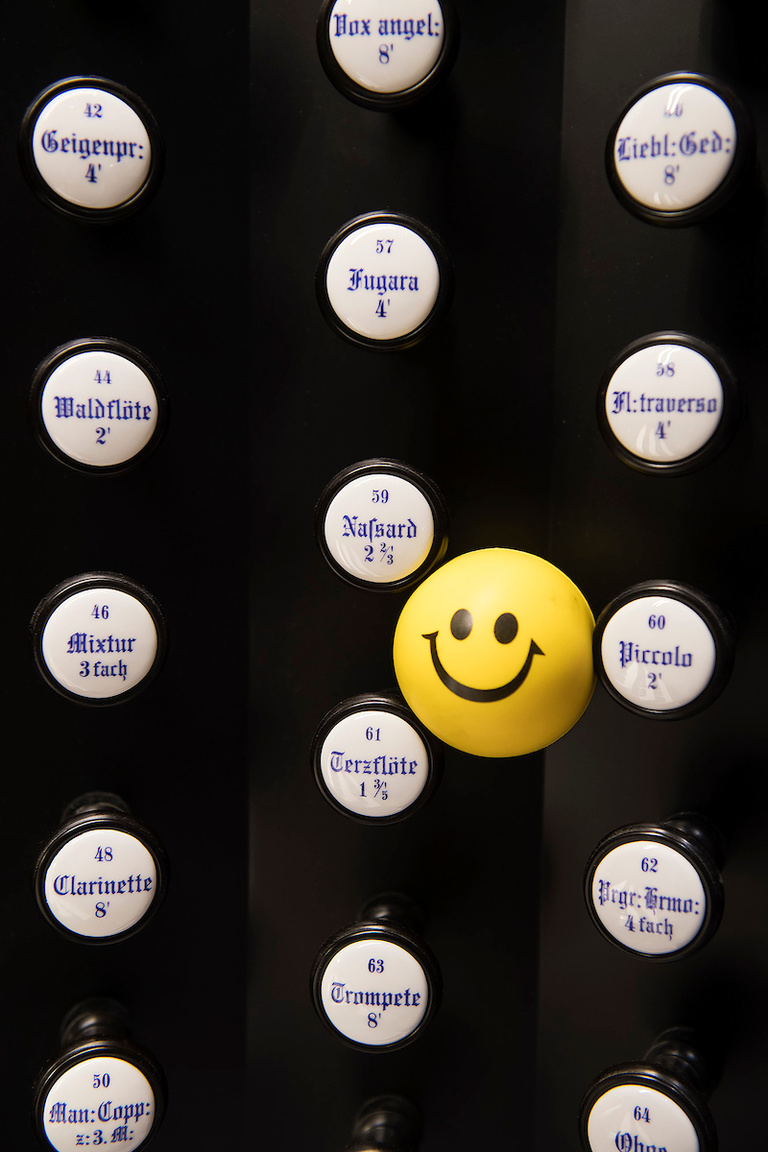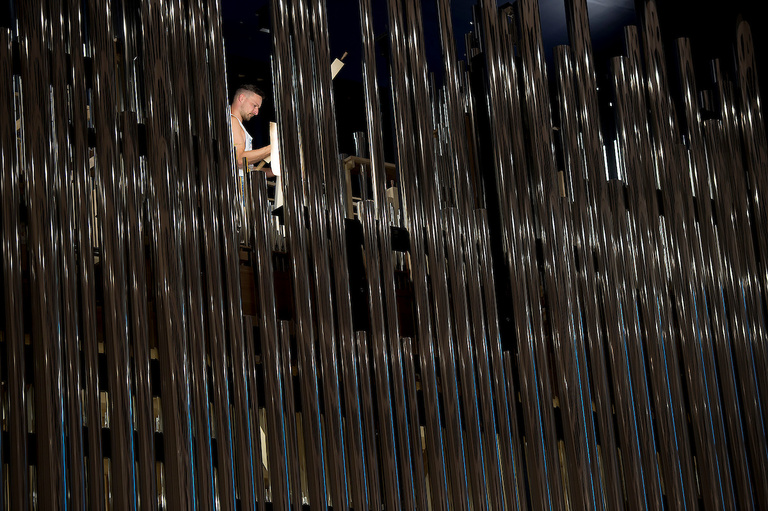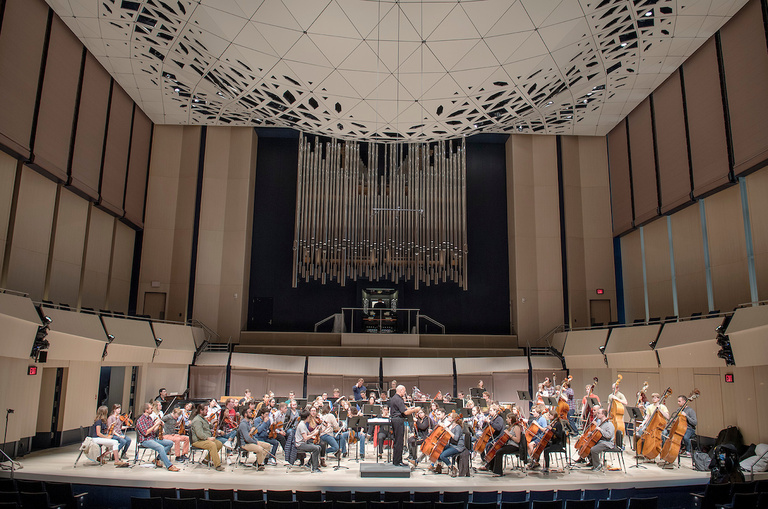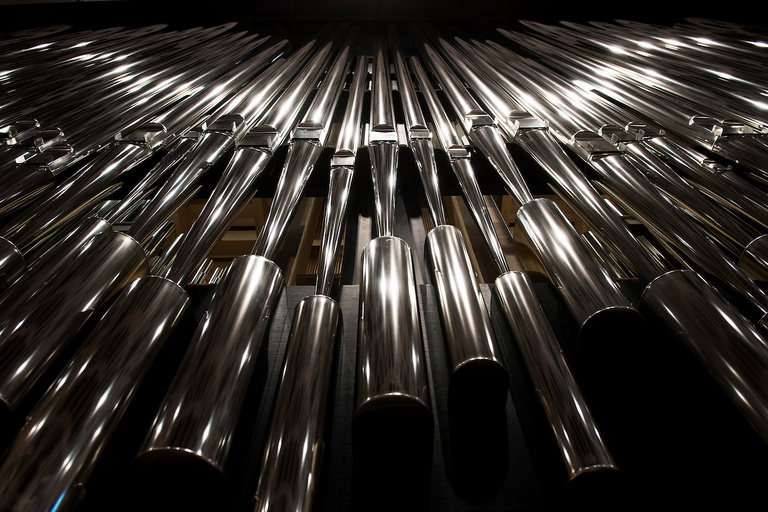It’s both the centerpiece and a masterpiece.
Of all the new instruments in the University of Iowa’s Voxman Music Building, the most notable might be the majestic Klais organ newly installed in the 700-seat concert hall.
After the 2008 flood damaged the old Voxman building beyond repair, plans were made to construct a new facility that would provide state-of-the-art instruments and practice and performance spaces for the next generation of music students.
The Klais will offer UI students a learning experience unlike anywhere else in the country.
“It’s not meant to be an expensive toy for me and my students; it’s meant to educate and illuminate,” says Gregory Hand, UI organ professor and one of the key decision-makers in the search for the instrument. “It will truly be the living, breathing heart of the building for years to come.”
Once it was decided that Voxman would receive a new organ, a committee consisting of School of Music and Facilities Management representatives came together to find the right one. Hand served on the committee and was charged with researching the style of organ that would best suit the UI.
“Because all organs are unique, you can’t go to a catalog and say ‘I want to get this one,’” Hand says. “Even if you find an organ in a cathedral that you like and the owner agrees to give it to you, it will sound different once you move it to a different room.”
So Hand traveled to Europe, learning first-hand about different organs, and decided that one based on the German Romantic style was right for Voxman. He says both the underrepresentation of German Romantic organs in the United States and its value as a teaching tool led to the decision.
Many German Romantic organ builders resisted adding many Industrial Age modifications to their instruments, which kept their sound similar to organs from the Classical era, Hand says.
“First and foremost, we wanted it to be an educational instrument, and one of the other things we really wanted was for it to have a historical character,” says Hand. “Playing an organ similar to the ones used by historical figures we’ll be studying and learning from will be very beneficial to students.”
Knowing what type of organ they wanted led the committee to the German organ manufacturer Orgelbau Klais.
Orgelbau Klais, based in Bonn, was founded in 1882 by Johannes Klais, the great-grandfather of Philipp Klais, the current president of the company. Johannes Klais was a German Romantic organ builder by trade and the family tradition passed from father to son all the way to Philipp.
“Klais was one of two builders that could meet the budget and the timetable for construction,” says Hand. “The committee unanimously voted to pick Klais. They couldn’t be beat on experience.”
Hand traveled across Germany with Philipp Klais, considering different types of organs on which to model the new one before settling on the Schwerin Cathedral’s organ in Schwerin, Germany. Installed in 1871, the Schwerin organ was the largest ever built by Friedrich Ladegast, a renowned German organ builder.
“Philipp and I kept going to visit organs and I would like one and he would hate it, and then he would like it and I would hate it,” says Hand. “Then we found the Schwerin and we both loved it.”
Though not quite as large as the organ it’s modeled after, the UI’s Klais organ is enormous, containing 3,883 pipes, the longest stretching 24 feet and the shortest less than half an inch.
“The key action in the organ is mechanical, the way German Romantic organs have been built for centuries,” says Hand. “That means that when you press a key, you are directly controlling a pallet that allows air into the toe of a pipe.”
The flood of 2008 affected more than 2.5 million square feet of building space at the UI (the equivalent of one-sixth of the campus), forced the evacuation and closing of 20 buildings, and resulted in $743 million in damage and recovery costs. This fall marks the completion of three major construction projects affiliated with recovery efforts—the Art Building replacement, Voxman Music Building, and Hancher Auditorium. The UI Museum of Art replacement is the final flood recovery project. Officials hope that building will open in 2019.
One modern component was added, however.
“The stop action is electric,” says Hand. “This means that when you pull a stop, it sends an electric signal to a motor that moves a slider and changes the sound of the organ.”
A team of five builders from Germany spent most of the summer in Iowa City meticulously installing each piece by hand. Andreas Stoffell, who has worked for Klais for 28 years, speaks with pride about his work.
“This organ is made in the old, traditional style,” he says. “It’s mostly mechanical, and mechanical organs process commands more quickly than electrical organs.”
As part of the shipping and pre-installation crew, Stoffell worked to craft an energy plan for the UI that would sustain an optimal temperature inside Voxman to keep the organ operating for as long as 200 years. And though its grandeur is unique to the university and the state, Voxman’s wasn’t the largest instrument the team had worked on.
“It’s actually pretty medium-sized,” Stoffell says, smiling. “We worked on one in Taiwan that was twice as large.”
Medium-sized or not, the workers also installed a spiral staircase within the three-story instrument so students can tour its inner workings, furthering its purpose as a teaching tool.
“That’s just another way we’ll be able to use it in a classroom setting,” Hand says. “While it also provides amazing grandeur to the hall, it’s such an important educational resource for the organ department. Each student of mine will practice on it a minimum of two hours a week.”
One of his students, Pablo Gorin, a PhD candidate in organ performance and pedagogy from Rosario, Argentina, knew after he first played the organ that it was a special instrument.
“It was an incredible experience from the first note, from the first sounds I was producing,” Gorin says. “The German Romantic organ is like a paint box where you can add a lot of colors, thus getting new ones by adding more to the mix, generating an incredible palette of sound. The ‘registration,’ or the combination of the organ stops, is completely different from Baroque instruments.”
Not only are many students in the School of Music excited to play on and perform with the organ, it also will also serve as a major recruitment tool, Gorin says.
“I think that the new Klais organ is going to revolutionize the School of Music in that it will attract the curiosity of students, performers, researchers, and music lovers from all over the country,” he says. “I think that this instrument is unique in the United States, and that people are going to want to come to play it, hear it, and study it. It is a major achievement for the School of Music.”
Editor’s note: The University of Iowa will celebrate the grand opening of the new Voxman Music Building on Friday, Oct. 21. For details about the event, visit inspire.uiowa.edu.
